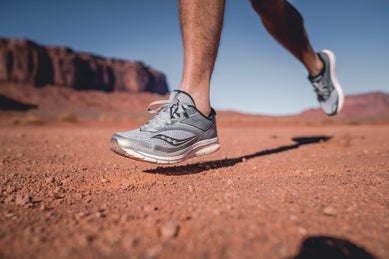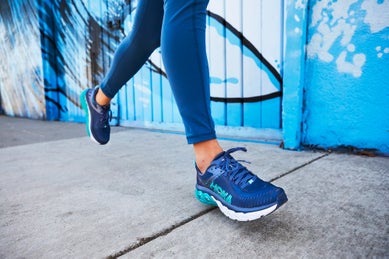What is Stack Height?
From barefoot to maximal and everything in between, a running shoe's stack height plays a huge factor in how it feels underfoot. Read on to learn what stack height is and exactly how we measure it at Running Warehouse Australia.
Stack height is the term used to refer to the amount of shoe material between your foot and the ground. Stack heights can range from barefoot to maximal, and this measurement is often equated with the amount of “cushioning” that a shoe has. A shoe with more cushioning will have a higher stack height while a shoe will less cushioning will have a lower stack height. While shoe foams and materials differ greatly and a shoes’ stack height is not always equivalent to whether it feels soft or firm, it is a great place to start when considering the right shoe for your running needs.
How We Measure Stack Height
In order to simplify the process of finding if a shoe is compliant with the World Athletics stack height regulations (cannot exceed 25mm for track events of 800m and above, or 40mm for road events), we have changed the way we measure shoe stack heights to now include the sock liner. Here's how we take the measurements:
Heel Stack Measurement:
Using a special device, we measure the distance from the bottom of the outsole lugs to the top of the shoe’s insole. This measurement is taken from the center of the heel while the shoe is sitting flat on a level surface. This initial measurement is the heel stack height provided on our product pages.
Forefoot Stack Measurement:
Once the heel is measured, we subtract the brand’s stated heel-toe offset for the shoe. This new measurement is the forefoot stack height. Midfoot and forefoot strikers should pay better attention to this measurement because it is more relevant to how much cushioning will be underfoot on their landings.
Minimal & Low Stack Height Running Shoes
Minimal and low stack height running shoes offer little cushioning, with some "barefoot" shoes having the least amount of midsole material. Because of the minimal amount of cushioning, shoes with low stack heights are appreciated by runners who prefer a more natural running experience. People who enjoy running in shoes with a low stack height would rather feel the ground than the cushioning. The thought process is that since there's not much cushioning to absorb impact, your body will adopt a more natural gait, strengthen foot and leg muscles, and become better at minimizing impact and injury.
Minimal & Low Running Shoes are Best for People Who...
- Value a more natural running experience
- Prefer feeling the ground over the cushioning of a shoe
- Would rather let their body adjust to minimise impact than rely on the shoe to absorb impact
Medium Stack Height Running Shoes
The majority of runners prefer shoes with a stack height that falls near the middle of the spectrum. This is because shoes with a medium amount of cushioning tend to be versatile enough for pretty much every type of run or distance. If you are new to running or are looking for one shoe that can do it all, we recommend starting with a shoe that has a medium stack height.
Shoes with a Medium Stack Height are Best for People Who...
- Value versatility
- Want a single shoe that will work for every run
- Prefer a shoe with a balance between cushioning and responsiveness
Highly Cushioned & Maximalist Running Shoes
At the other end of the spectrum, highly cushioned and maximalist running shoes provide a ton of cushioning underfoot. This thick padding produces a high level of protection from the impact of running. People who prefer running in shoes with either high or maximal stack heights, enjoy a plush running experience with the highest level of impact protection available.
High Stack Running Shoes are Best for People Who...
- Value a comfortable, protective running experience
- Prefer feeling the cushioning of a shoe over feeling the ground
- Would rather their shoe absorb impact than their body
See Also: Heel-Toe Drop
Heel-toe drop is another factor to take into account when considering a shoe's level of cushioning. Heel-toe drop is a measurement of the difference in cushioning between the heel and the forefoot. This matters because higher heel-toe drops tend to favour heel-strikers while lower drops cater towards mid to forefoot strikers.

